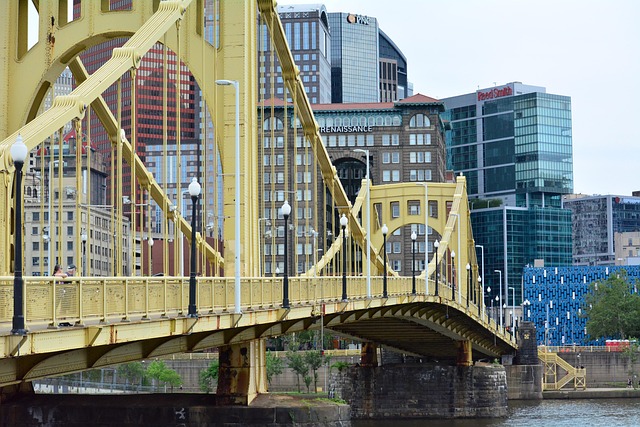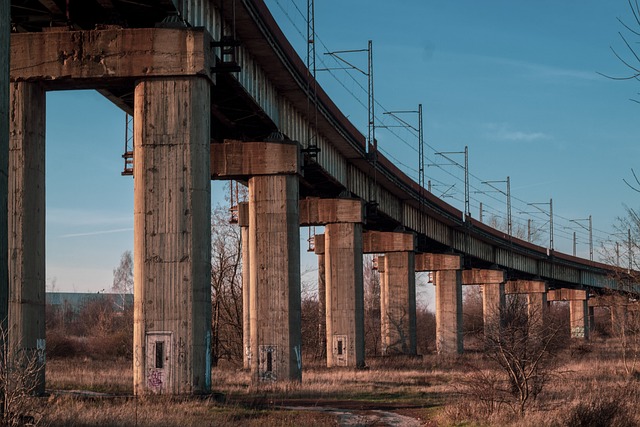The expansion of utilities, including improved road networks, water supply systems, sewage infrastructure, high-speed internet, and public transport, significantly influences the real estate market by enhancing property values, attracting investors and buyers, and fostering long-term sustainability. These developments lead to increased demand for housing and commercial spaces, driving up property prices. Modern infrastructure upgrades not only revitalize underserved areas but also create appealing neighborhoods with diverse communities and thriving business ecosystems. Urban planners and developers must proactively incorporate green spaces, efficient energy systems, and innovative waste management into new builds to meet shifting demands, support neighborhood growth, and shape the future sustainability of cities.
“Expanding utilities infrastructure is a catalyst for neighborhood growth and transformation, significantly influencing the real estate market. This article explores how strategic development in utilities can drive economic vibrancy and reshape urban landscapes. We delve into the dynamics of real estate markets, examining the ripple effects of improved infrastructure on property values and community development. Additionally, we discuss sustainable planning strategies to meet the evolving needs of growing neighborhoods.”
The Impact of Infrastructure Development on Real Estate Market Dynamics

The expansion of utilities, such as improved road networks, enhanced water supply systems, and better sewage infrastructure, has a profound impact on the real estate market dynamics of any neighborhood. These developments not only increase the overall value of properties but also attract new investors and buyers. Improved accessibility and connectivity make areas more desirable, leading to a surge in demand for housing and commercial spaces. This, in turn, drives up property prices as developers recognize the potential for growth.
Additionally, infrastructure upgrades contribute to the long-term sustainability and livability of neighborhoods, further boosting their appeal. Modern utilities often come with advanced technology that enhances energy efficiency, reduces environmental impact, and provides residents with a higher quality of life. As such, areas with well-developed infrastructure become prime locations for families, businesses, and investors alike, fostering a healthy real estate market.
Neighborhood Transformation: How Utilities Expansion Drives Growth

In the realm of real estate, neighborhood transformation is often sparked by subtle yet powerful factors—one such catalyst being the expansion of utilities. When essential services like water, electricity, and internet connectivity are enhanced or introduced to previously underserved areas, it triggers a ripple effect that fosters growth. Developers take notice of these improved infrastructures, recognizing them as opportunities to invest in residential and commercial projects. As a result, neighborhoods experience revitalization, attracting new businesses, residents, and a vibrant atmosphere.
The expansion of utilities can transform a once-neglected area into a desirable location, increasing property values and sparking interest from real estate investors. Better connectivity also facilitates modern lifestyles, encouraging entrepreneurs to establish ventures and families to settle in, thereby contributing to the overall growth and diversity of the community. This process creates a positive feedback loop where improved amenities attract more people, leading to further development and a thriving neighborhood ecosystem.
Planning for Sustainable Urban Development in the Face of Changing Needs

As cities grow and real estate demands shift, planning for sustainable urban development becomes increasingly crucial. The expansion of utilities—be it access to high-speed internet, improved public transport, or upgraded infrastructure—not only facilitates neighborhood growth but also shapes its future sustainability. Developers and urban planners must anticipate changing needs, ensuring that new builds incorporate green spaces, efficient energy systems, and innovative waste management solutions. This proactive approach not only attracts environmentally conscious residents but also fosters a resilient community capable of adapting to evolving challenges.
By integrating sustainable practices into real estate development, cities can mitigate environmental impacts while enhancing the overall quality of life for their inhabitants. This involves considering long-term strategic plans that prioritize walkability, cycling infrastructure, and mixed-use developments. Such strategies not only reduce carbon footprints but also promote social cohesion, economic vibrancy, and a healthier lifestyle—all essential factors in creating thriving urban environments that can accommodate future growth while preserving their unique character.






